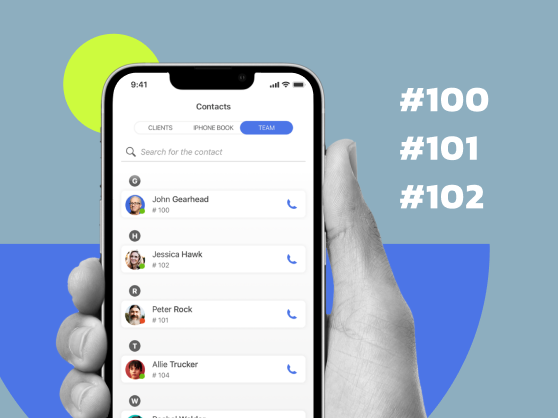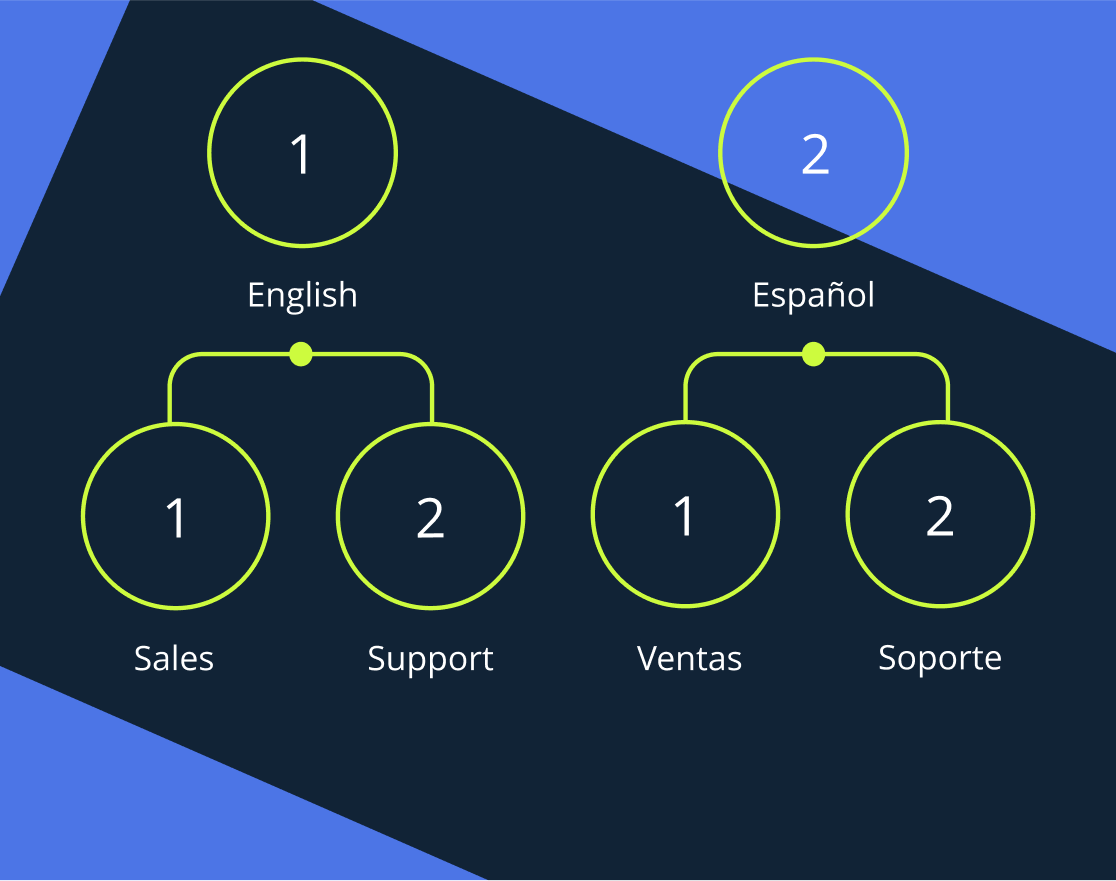Inbound calls are of immense importance to call centers. However, understanding how to handle them in a way that will keep customers happy and loyal is of the utmost importance. This guide explains the meaning of inbound calling, why it is important, and how management can improve your call center’s performance and client relationships.
What is an inbound call?
An inbound call is a phone call made by a client to a company. Typically, these calls are for customer support, inquiries about products or services, or issues that need to be resolved. They are a direct line of communication between the client and the company and are essential for providing the best customer service.
Incoming requests can range from simple queries to complex technical issues. They represent opportunities to connect with clients, address their needs, and build stronger relationships. The right inbound calls strategy can improve customer satisfaction, foster loyalty, and strengthen brand reputation.
Types of inbound calls
Inbound calls can vary depending on the customer’s needs and the nature of the inquiry. Understanding the different types helps prepare agents to handle them well. Let’s look into some of the common ones:
- Technical support calls: Clients looking for assistance with a product or service involving troubleshooting an issue.
- Inquiry: People requesting information about products, services, or company policies.
- Sales: Leads interested in purchasing or learning more about a product or service.
- Feedback: Consumers provide comments or express concerns about their experiences.
- Setting an appointment setting: Clients trying to schedule or change appointments.
- Complaints: Customers usually express dissatisfaction and require an empathetic ear or someone who can be a problem solver.
- Billing and payment: Inquiries about invoices, payments, or account balances.
- Renewal and retention: Inquiries about renewing subscriptions or services.
The difference between inbound and outbound calls
Clients initiate inbound phone calls when they contact a company seeking support, and information or to provide feedback. A call center agent handling these calls should focus on listening attentively, providing solutions, and quickly addressing customer needs. The primary goal is to deliver excellent customer service and resolve issues successfully.
In contrast, outbound calls are initiated by the company reaching out to clients or prospects for sales, marketing, or follow-up purposes. Agents making these calls adopt a proactive approach, aiming to engage leads, promote products or services, or gather information. They need strong communication skills to persuade and build trust quickly.
How to manage inbound calls successfully
Managing inbound phone calls successfully is rather important for delivering excellent customer service and maintaining their satisfaction. Here are key strategies to have in mind:
- Train agents thoroughly: Provide training covering product knowledge, communication skills, and problem-solving techniques. Well-trained agents are better equipped to handle a wide range of inquiries and issues.
- Active listening: Encourage agents to be attentive listeners by fully concentrating on the inbound caller, understanding their message, and responding appropriately. This helps to identify client needs and provide solutions accurately.
- Use customer relationship management (CRM) systems: Integrate a CRM system to give agents real-time access to client information, including purchase history and previous interactions. This approach provides more personalized service and quicker issue resolution, and agents will be able to handle inbound calls more efficiently.
- Refine call routing: Improve the call routing system of direct calls to the most appropriate agent or department based on the customer’s needs. This reduces transfer rates and wait times, improving the overall experience.
- Monitor and analyze performance: Regularly track key performance indicators such as average handling time, first call resolution, and customer satisfaction scores. Use this data to identify areas for improvement and implement necessary changes.
- Provide multi-channel support: Offer support through various channels like email, live chat, social media, SMS, and phone calls. This allows people to choose their preferred communication method and can reduce call volume.
- Maintain a knowledge base: Develop a knowledge base that inbound call center agents can reference during telephone calls. This resource should include product information, troubleshooting guides, and answers to frequently asked questions.
How to build an inbound calling strategy
Developing a dynamic inbound calling strategy is essential for delivering high-quality customer service and achieving business goals. Here are steps to create a successful strategy:
- Define your objectives: Identify what you aim to achieve with your inbound call center, such as improving client satisfaction, increasing first-call resolution rates, or reducing average handling time.
- Understand your customers: Analyze client data to grasp their needs, preferences, and common issues. This information helps adjust services to meet their expectations.
- Select the right technology: Choose call center software and tools that support your objectives, including CRM integration, intelligent call routing system, and real-time analytics.
- Develop standard operating procedures: Establish clear guidelines and processes for handling different types of calls to ensure consistency and efficiency.
- Train and empower your agents: Invest in ongoing training and provide agents with the necessary resources. Empower them to make decisions that improve interactions with inbound callers.
- Set measurable KPIs: Define key performance indicators that align with your objectives. Regularly monitor these metrics to assess performance and make improvements.
- Gather and act on feedback: Collect feedback from customers and agents to identify areas for improvement. Use this information to change your strategy and processes.
Benefits of inbound calling
Inbound phone calling is vital in building strong customer relationships and driving business growth. Managing these calls well offers numerous benefits.
Higher customer satisfaction
Prompt and professional handling of inbound calls increases customer satisfaction. According to an American Express study, 33% of clients consider switching companies after one instance of poor service. Timely and helpful responses can prevent this.
Increased sales opportunities
These phone calls come from interested prospects or existing customers looking to buy more. Phone calls convert to revenue 10 to 15 times more than web leads. Handling these calls well can directly increase sales.
Improved customer retention
Providing fast and helpful responses resolves issues quickly, reducing customer churn. Retaining existing customers costs less money than acquiring new ones.
Useful customer insights
Inbound telephone calls provide direct feedback about client needs and experiences. This information goes to product development, which in turn leads to service improvements.
Strengthened brand reputation
Good call management demonstrates a commitment to excellent service and improving brand reputation. A study on customer experience for executives has shown that 13% of clients will share their negative experiences with 15 or more people, highlighting the significant impact that their experiences can have on a brand’s reputation.
Improved operations
Managing calls well improves resource allocation, reduces costs, and increases overall operational performance.
What technologies are used in inbound call centers?
Inbound call center software is a solution designed to manage and organize incoming calls in a call center. These tools help businesses provide good customer service by facilitating call management, agent performance, and client interactions.
Key technologies and features include:
- Interactive Voice Response (IVR): Customers can navigate a menu system to reach the appropriate department or access self-service options.
- Automatic Call Distribution (ACD): Routes incoming calls to the most suitable call center agent based on predefined criteria.
- Customer Relationship Management (CRM) integration: Provides agents access to customer data and interaction history.
- Call recording and monitoring: Enables recording of calls for quality assurance and training.
- Real-time analytics and reporting: Offers insights into performance metrics.
- Workforce management tools: Assists in scheduling agents and forecasting call volumes.
- Omnichannel support: Integrates multiple communication channels for a smooth experience.
- Knowledge base systems: Gives agents access to necessary information and resources.
- Security features: Protects sensitive data through encryption and compliance.
- Scalability and flexibility: The system can grow with your business and adapt to changes.
Investing in the right inbound call center software is crucial for delivering exceptional customer service. MightyCall offers intuitive and reliable features, including advanced IVR, CRM integration, and real-time analytics. With MightyCall, businesses can improve inbound call management and customer interactions.
schedule your personalized demo with our amazing team

Inbound calling tips
Implementing good practices can improve the quality of inbound calls. We did a little market research and found some valuable tips:
- Maintain a positive attitude:
Keep a friendly and professional tone throughout the call. A positive attitude influences the customer’s perception and eases potentially tense interactions. For example, responding with “Thank you for bringing this to our attention; let’s solve this together!” can set a collaborative tone. - Use the customer’s name:
Addressing the client by name adds a personal touch and helps build trust. For instance, “Hello, Mr. Smith, how can I assist you today?” makes the conversation more personal and engaging. - Practice empathy:
Understand and acknowledge their feelings to de-escalate the situation, especially if they are frustrated. Saying, “I can understand why that situation must be frustrating,” acknowledges their feelings and can help soothe agitated inbound callers. - Avoid jargon:
Use clear, simple language to ensure they understand the information provided. Avoid technical terms that may confuse them. For example, instead of saying, “You need to reboot your modem,” say, “Could you please turn your internet box off, wait a minute, and turn it back on?” - Confirm understanding:
To minimize miscommunication, summarize the customer’s concerns from time to time to ensure that everything is clear. After hearing their issue, you might say, “So, to make sure I have this right, you’re having trouble logging in to your account?” - Offer proactive solutions:
Anticipate customer needs and offer solutions before they ask, improving the experience and showcasing expertise. For example, if you receive inbound calls about a failed transaction, you could say, “I’ve noticed the transaction didn’t go through. I’m restarting it for you right now.” - Follow up when necessary:
If an issue isn’t resolved during the phone call, ensure appropriate follow-up actions and keep the customer informed. For example, you could say, “I will check with our tech team and email you an update within the next 24 hours.” - Manage call time wisely:
Address their needs thoroughly while being mindful of call duration to maintain productivity. For instance, efficiently gathering all necessary information at the beginning of the call can prevent the need for repeated clarifications. - Stay calm under pressure:
To manage difficult situations effectively, remain calm and composed. Maintaining composure when faced with an irritated inbound caller can help de-escalate the situation and lead to a more productive dialogue. - Seek continuous improvement:
Encourage agents to seek feedback and engage in ongoing training to improve their skills and performance. Regularly reviewing call recordings and performance metrics with agents can help identify areas for improvement and reinforce good practices.
Overcoming inbound calling challenges
Inbound calls can present several challenges affecting customer service quality. Here are three common challenges and ways to overcome them:
- Large call volumes lead to long wait times
Challenge: A call surge can overwhelm resources, causing long wait times and frustration.
Solution: Implement call queuing and offer callback options. Use workforce management tools to forecast peak times and adjust everything accordingly. - Limited access to customer information
Challenge: Agents without real-time access to customer data may struggle to assist fully.
Solution: Integrate CRM systems to provide immediate access to their profiles and interaction history. - Language barriers between agents and customers
Challenge: Communication issues due to language differences can lead to misunderstandings.
Solution: Employ multilingual agents or provide translation services. Use IVR systems to route clients to agents who are fluent in their preferred language.
How to choose an inbound call center software
Choosing the right software for your business and managing inbound calls depends on several factors related to your company’s size, needs, and goals. Here’s a step-by-step guide:
- Identify essential features: Look for IVR, call routing, and CRM integration.
- Ensure scalability: Choose software that can grow with your business.
- Check ease of use: Choose an intuitive interface to make your inbound call center agents work easier.
- Verify integration capabilities: Ensure they work with your existing systems.
- Consider cost: Find a solution that fits your budget without compromising quality.
Measuring inbound call performance
To assess the performance of inbound call operations, monitor these key performance indicators:
- Customer Satisfaction Scores (CSAT): Measure satisfaction related to agent interactions.
- Average Handling Time (AHT): Assess the average duration agents take to handle calls.
- First Call Resolution (FCR) Rate: Evaluate the percentage of calls resolved without follow-up.
- Service Level and Response Times: Monitor how quickly calls are answered, aiming for minimal wait time.
These metrics provide insights into performance and help refine strategies for better customer service.
Receive inbound phone calls to make sure your clients feel heard
Managing incoming phone calls in a way that clients feel heard is essential for delivering excellent customer service, building strong relationships with them, and driving business success. By understanding the nature of inbound calls, implementing strategies, using appropriate technologies, and continuously monitoring performance, businesses can improve their operations and stand out in a competitive market.
Investing in the right tools is crucial for successful inbound calling. MightyCall offers solutions to help your business manage inbound calls, strengthen support operations, and foster warmer relationships.




























